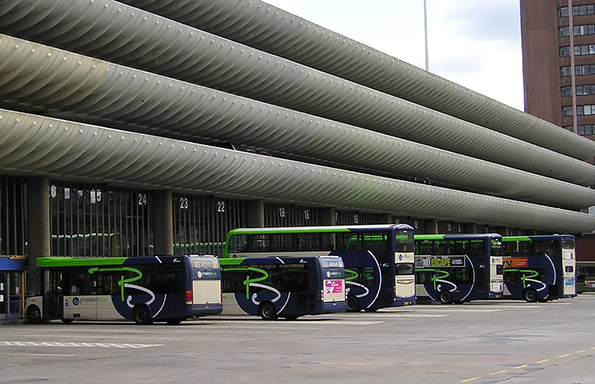Making the case for Brutalism Now at London campus
Published on

The future of the once derided architectural style of Brutalism will be considered at the special one-day Brutalism Now event, hosted by the University of Liverpool in London on October 11.
The event – which features contributions from architects, heritage professionals, academics and more – takes place in the same month Preston Bus Station celebrates its 50th anniversary.
The bus station, lauded by Brutalist aficionados as one of the finest examples of the style, is now a Grade II Listed building after the University of Liverpool’s Dr Christina Malathouni researched and wrote its third listing application in December 2012 - submitted on behalf of The Twentieth Century Society - saving the building from demolition.
Dr Malathouni has now brought together some of the sharpest minds from major organisations like RIBA, Historic England, IHBC, World Monuments Fund Britain, ICOMOS-ISC20C and the Getty Conservation Institute, as well as practicing architects at some of the country’s leading firms, to deliver Brutalism Now; in partnership with The Twentieth Century Society.
Dr Malathouni, a Lecturer at the University’s School of Architecture, said: “Our one-day cross-sector conference will embrace not just the bus station, but Brutalist architecture more broadly.
“It aims to explore how much progress has been made in the public and professional understanding, appreciation, management and celebration of Brutalist buildings, and what the current and future challenges and opportunities may be.”
The event will seek to draw on the wider issues at play when considering Brutalist architecture, including how climate change is influencing a drive towards the refurbishment and reuse of existing building stock.
Alongside this, there will be consideration of how the publicity around threats to familiar Brutalist buildings have shined a light on the style, and helped architects, heritage professionals, and the general public gain a greater understanding and appreciation of our recent architectural heritage.
There are also questions around the benefits of the contemporary blurring of ‘new’ and ‘old’ architecture, as witnessed by the increasing inclusion of refurbishment and regeneration projects in major architectural awards.
Dr Malathouni added: “Brutalism has been a bold approach to architecture that has provided innovative solutions to social needs, engaged with technical advances and given imaginative expression to modern aesthetics.
“By looking after Brutalist buildings, not only are we able to continue using key housing, cultural and utilitarian buildings today that add to the variety of our built environment, but we also make sure this wealth of architectural creativity from the third quarter of the twentieth century will survive for future generations too.”
Brutalism Now takes place at the University of Liverpool in London on October 11. To find out more, please visit www.liverpool.ac.uk/architecture/events/brutalismnow/
[callout title=More]Viewpoint: Brutalism, bunkers and bloody-mindedness[/callout]